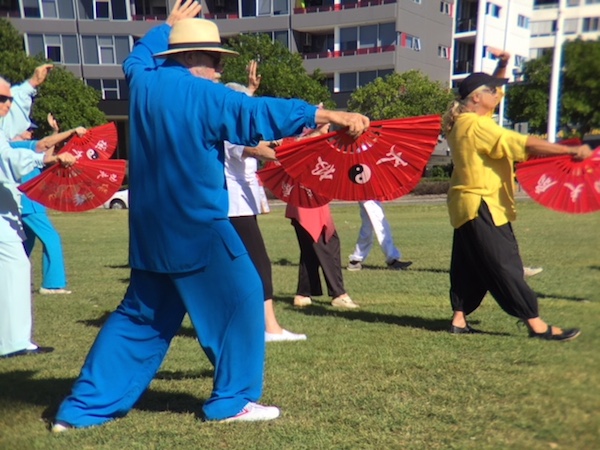 |
| Tai Chi at Bucuti & Tara Beach Resort Aruba |
Or take a sojourn to Wudang Mountain and train with Taoist masters where you'll be immersed in a traditional Chinese lifestyle. The masters are experts in kung fu, tai chi and qigong, play musical instruments and paint exquisite calligraphy. Students young and old are given opportunities to learn about the Taoist approach to life. Here is a video link to Master Chen Shiyu playing xiao (bamboo flute) with Wudang tai chi being performed in the background. If you've marvelled at Crouching Tiger, Hidden Dragon this will be right up your alley.
 |
| Beautiful Wudang music and flowing, serene tai chi |
Closer to home, this is one date you can't miss...
World Tai Chi & Qigong Day - April 28th 2018
One world, one breath.
This Saturday on April 28th, tai chi lovers in 80 countries around the world will take part in World Tai Chi & Qigong Day. As the sun rises in different time zones, tai chi practitioners will join a global wave of goodwill taking place in various cities and towns.
If you're interested in trying tai chi and qigong or joining in one of the many events and get togethers on World Tai Chi & Qigong Day, jump onto the website and find a location near you. If it's not listed, then why not call one of the tai chi or kung fu centres in your city/town and enquire. Here are a few snaps from World Tai Chi Day 2017 featuring my friend, Bob Ivett, and his students from U3A and the Coolangatta Senior Citizens Centre enjoying fan and broad sword practice after completing Yang 24 form. Graceful, calm movements on the park green accompanied by smiles and heaps of laughter.
As you can see tai chi offers many avenues everybody can explore, even just sitting back and watching a tai chi video is calming and inspiring.












